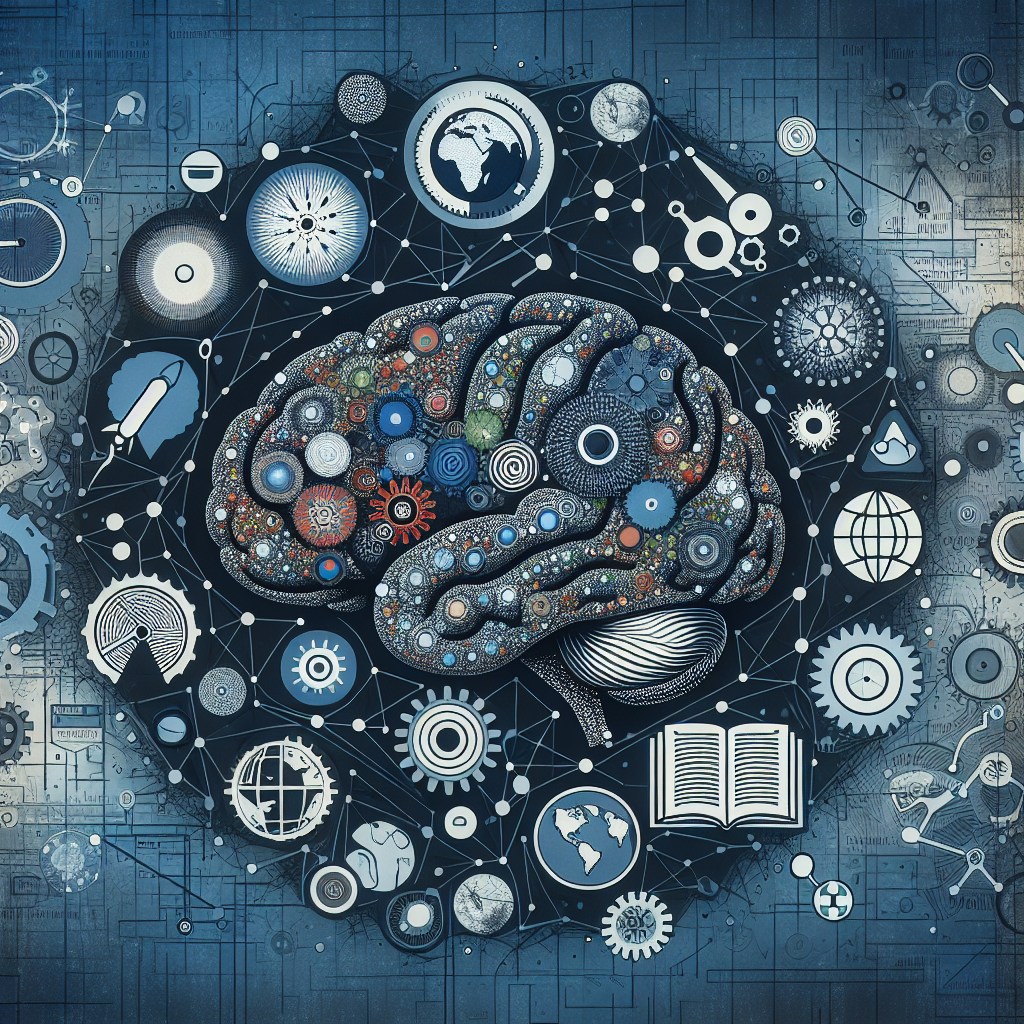
Introduction
Have you ever marveled at how you can recognize a friend from a distance, understand complex ideas, or even recall childhood memories tied to specific words? These cognitive feats hinge on the intricate neural pathways of human memory, particularly semantic memory. This essential cognitive function enables us to make sense of the world around us by organizing and storing our knowledge about concepts, facts, and relationships. The neuroscience of semantic memory is not just an academic pursuit; it profoundly influences how we interact with our surroundings, develop language, and build our identities.
As we delve into The Neuroscience of Semantic Memory: Insights into Our Understanding of the World, we’ll unpack the intricacies of this vital aspect of cognition. From the neural architecture supporting semantic memory to its implications for education and artificial intelligence, this exploration promises to enrich your perspective on how we perceive and relate to the world.
The Architecture of Semantic Memory
Semantic memory is a part of our explicit memory system—an enduring storehouse for facts and concepts. Unlike episodic memory, which relates to personal experiences, semantic memory consists of generalized knowledge framed within a broader context. For instance, knowing that Paris is the capital of France is part of semantic memory, while recalling your last visit to the Eiffel Tower occupies episodic memory.
Neural Structures Involved in Semantic Memory
Understanding The Neuroscience of Semantic Memory: Insights into Our Understanding of the World necessitates a look at the brain structures involved. Key players include:
The Temporal Lobes: Crucial for processing semantic information, including language and knowledge.
The Prefrontal Cortex: Plays a significant role in organizing and retrieving semantic knowledge, contributing to problem-solving and decision-making.
- The Angular Gyrus: Acts as a bridge connecting visual, auditory, and tactile modalities, facilitating the integration of multimodal information into coherent knowledge.
Table 1: Brain Structures Involved in Semantic Memory
| Brain Structure | Function |
|---|---|
| Temporal Lobes | Processing language and semantic knowledge |
| Prefrontal Cortex | Organizing and retrieving information |
| Angular Gyrus | Integrating multimodal information |
The Role of Neural Networks
Neuroscientific research indicates that semantic memory relies on complex neural networks. Studies using brain imaging technologies like fMRI have shown that activation patterns in these networks emerge when individuals engage in tasks requiring semantic knowledge. For example, when participants identify a category to which a word belongs (like ‘animal’ for ‘dog’), the associated brain regions light up, demonstrating the interconnectedness of our knowledge base.
Case Study: Semantic Memory and Aphasia
A fascinating case study highlighting the importance of semantic memory involves patients with semantic dementia, a form of aphasia. These individuals can produce grammatically correct sentences but struggle with comprehension and retrieving semantic information. Neurological examinations show that their anterior temporal lobes have been compromised, effectively illustrating how damage to specific brain areas can diminish our ability to understand and process meaning. Such insights emphasize the critical role that semantic memory plays in everyday communication and cognition.
The Development of Semantic Memory
Semantic memory’s development begins in childhood and continues to evolve throughout life. Understanding this process gives us insights into our understanding of the world and how knowledge acquisition occurs.
Early Development
From the moment babies are born, they start to form semantic categories. Studies show that infants can categorize objects and sounds even before they can speak. These early categorizations set the foundation for more complex semantic knowledge later in life.
Language and Semantic Development
Language acts as a vehicle for semantic memory development. Children learn new words and their meanings through social interactions, contextual learning, and storytelling. The more rich and varied the linguistic environment, the more robust their semantic memory becomes, leading to improved cognitive abilities.
Chart 1: Semantic Memory Development Stages
| Age Range | Developmental Milestones |
|---|---|
| 0-2 years | Initial categorization (objects) |
| 3-5 years | Vocabulary expansion |
| 6-10 years | Conceptual understanding (categories) |
| Adolescence | Refinement and organization of knowledge |
The Impact of Semantic Memory on Learning
A well-functioning semantic memory is vital for educational success. Its influence extends far beyond rote memorization; it affects critical thinking, problem-solving, and collaborative learning.
The Power of Associations
The more associations we form in our semantic memory, the easier it becomes to retrieve information. This principle is leveraged in educational settings where teachers encourage connections between new topics and prior knowledge. Techniques such as concept mapping and experiential learning can enhance students’ understanding and retention of information.
Case Study: Semantic Memory in Educational Settings
A notable case study examined diverse teaching methods among middle school students learning about ecosystems. Students engaged in project-based learning—creating their ecosystem models—reported significantly higher retention rates and deeper understanding of the material compared to traditional lecture methods. This illustrates that hands-on, context-rich learning experiences can strengthen semantic memory and foster a more comprehensive grasp of complex subjects.
Semantic Memory and Artificial Intelligence
The realm of artificial intelligence (AI) has begun to integrate principles from cognitive neuroscience, particularly those related to The Neuroscience of Semantic Memory: Insights into Our Understanding of the World. AI systems strive to mimic human understanding and often rely on semantic networks to process information.
Understanding Semantic Networks
In AI, semantic networks are used to represent knowledge in a form that machines can understand. These networks consist of nodes (representing concepts) connected by edges (representing relationships). This structure mimics how humans organize and retrieve knowledge, allowing machines to perform tasks that require a degree of semantic understanding, such as natural language processing and information retrieval.
Case Study: AI Language Models
Recent advancements in AI language models, such as OpenAI’s GPT-3, highlight the application of semantic memory principles. These models use extensive datasets to learn associations between words and concepts, enabling them to generate human-like text. By analyzing billions of sentences and their meanings, they embody the neuroscience of semantic memory at a digital level, pushing the boundaries of human-computer interaction.
The Future of Semantic Memory Research
Research into semantic memory is continually evolving. Understanding the neuropsychological underpinnings of this cognitive function has implications that reach far beyond academic exploration, touching fields like psychology, education, and AI.
Neuroplasticity and Semantic Memory
One exciting frontier is the study of neuroplasticity—the brain’s ability to reorganize itself in response to learning and experience. By employing targeted strategies, researchers are exploring ways to enhance semantic memory even in older adults, offering strategies to combat age-related cognitive decline.
Implications for Therapy and Rehabilitation
Therapeutic applications of semantic memory research are promising. For instance, rehabilitation programs for individuals with brain injuries or dementia increasingly emphasize semantic training exercises to foster knowledge retrieval and communication skills.
Conclusion
Exploring The Neuroscience of Semantic Memory: Insights into Our Understanding of the World reveals the profound impact of this cognitive function on our daily lives. From navigating social interactions to advancing artificial intelligence, semantic memory shapes the way we think, learn, and relate to one another.
As we continue to unravel the complexities of semantic memory, we not only enhance our understanding of human cognition but also empower ourselves to harness these insights in education, technology, and mental health.
Motivational Takeaway
Invest in your semantic memory by seeking diverse experiences, engaging in lifelong learning, and developing your ability to form connections between various fields of knowledge. In doing so, you elevate not just your cognitive abilities, but your capacity for empathy, creativity, and innovation. The journey into the neuroscience of semantic memory will reveal endless avenues for personal growth and understanding.
FAQs
1. What is semantic memory?
Semantic memory is a type of explicit memory that involves the storage and retrieval of factual knowledge and concepts, distinct from personal experiences (episodic memory).
2. How is semantic memory different from episodic memory?
While semantic memory concerns general knowledge about the world, episodic memory relates to personal experiences and specific events in one’s life.
3. Can semantic memory be improved?
Yes, through strategies such as active learning, association building, and engaging with diverse content, individuals can enhance their semantic memory over time.
4. What roles do the temporal lobes play in semantic memory?
The temporal lobes are essential for processing language and semantic knowledge, facilitating the understanding and retrieval of concepts.
5. How can insights from semantic memory research apply to education?
Educators can leverage principles from semantic memory research by encouraging connections between new information and existing knowledge, enhancing students’ understanding and retention of material.

















